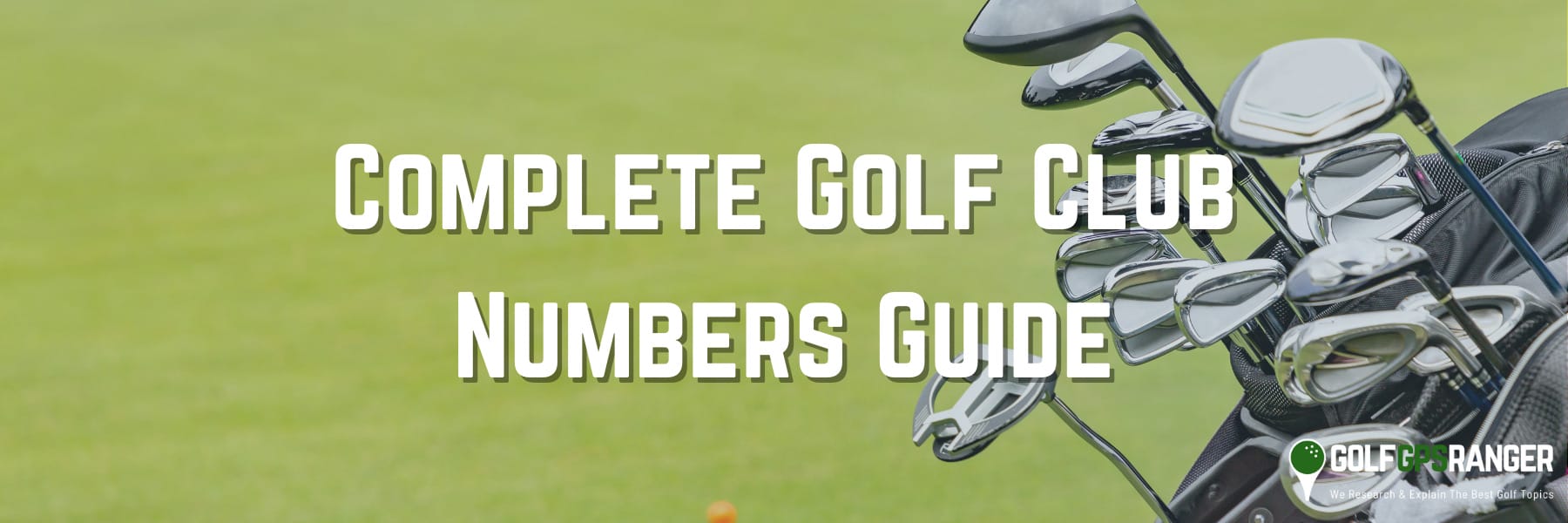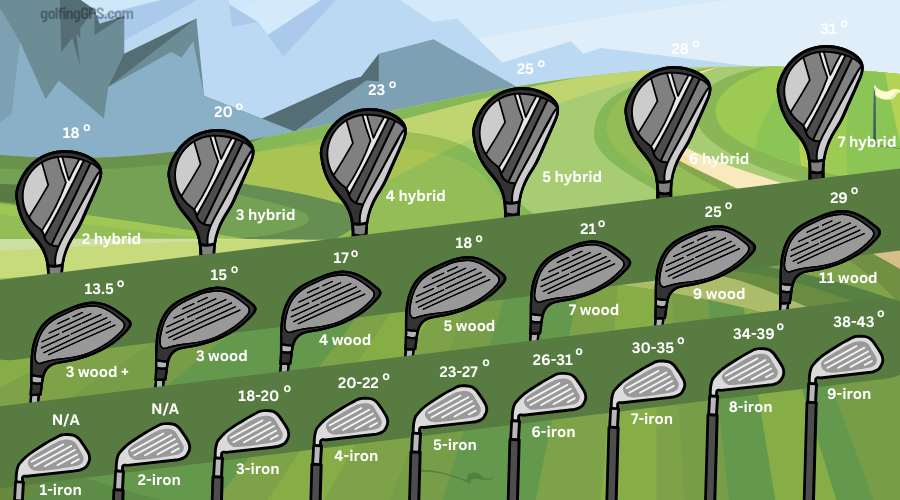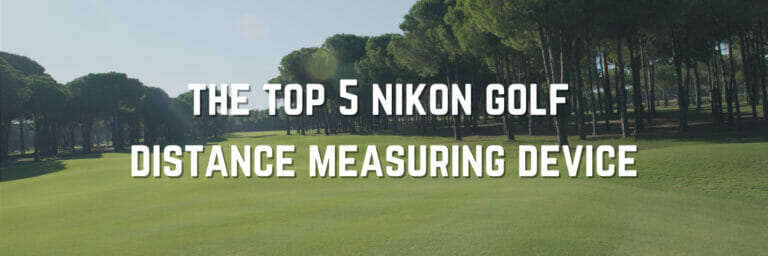Complete Golf Club Numbers Guide: Decoding and Choosing the Right Club

!!!!DISCLAIMER!!!! This site may contain Amazon & other affiliate links.
This means if you click on one of the product recommendation links, this site may receive a small commission. This is at no extra cost to you and may include exclusive discounts when possible. This helps support this site and allows us to keep making content like this. Thank you for your support!
Welcome to our detailed golf club guide. We will explain what the numbers mean on your clubs and help you pick the best club for every shot. Knowing what the numbers on your clubs stand for, especially about the lofts, will make a big difference on the course. This guide is for both new and skilled golfers, offering insights on the types of clubs, their functionalities, and tips for creating your perfect set.
Key Learnings
- Golf club numbers represent the loft, or angle of the clubface, with lower numbers indicating lower lofts for longer shots and higher numbers indicating higher lofts for shorter shots.
- Lofts play a crucial role in shot height and distance. So, understanding club numbers helps in picking the right club for your shots.
- Picking the right club depends on shot shape, distance to the green, and any obstacles. This is important on the tee, fairway, and for iron shots.
- Irons, fairway woods, wedges, and putters each serve unique purposes in your game. Knowing these roles can boost your performance.
- For a new set, beginners might need a driver, a mix of irons, wedges, and a putter. The set should fit your playing style and skill level.
The Significance of Golf Club Numbers
Ever pondered on those numbers on your golf clubs? Each number tells you the loft or the face angle of the club. A low number means less loft, shooting the ball further. High numbers indicate more loft, for shots needing height and less distance.
Figuring out these numbers can improve your game by picking the right clubs for each shot. The loft of a golf club is key in its numbering. It’s the angle of the clubface. This angle changes how high or far your ball goes. Clubs with low lofts make the ball fly farther but lower.
Those with high lofts make it fly up and land closer. Knowing this, you’ll be able to choose wisely for different shots. Knowing the distance each club covers is vital. Clubs are made to hit the ball varying distances. By understanding the usual distances each club covers, you can plan your game better.
This knowledge helps you pick the best club for any situation when playing golf.
Choosing the Right Club
Choosing the right club in golf is key to doing well on the course. We’ll give you a guide to help pick the best club for any situation. Whether you’re at the tee, fairway, or ready to hit an iron, knowing how to choose will boost your game.
Tee Shot Golf Club Selection
Picking the right club for your tee shot is crucial. You need to consider:
- Distance to the target
- The layout of the hole
- Current weather conditions
- Your personal shot shape preference
Understanding these factors will help you nail your first shot with confidence.
Which Golf Club to Use
After teeing off, picking the next club for the green is your task. Important things to think about include:
- Distance to the green
- Any hazards or obstacles in your path
- Your comfort and confidence with the club
Thinking about these factors will guide you to the best club for getting close to the pin.
Correct Iron Club
Choosing the right iron is all about precision and control. When picking an iron club, think about things like:
- Distance to the target
- Ball flight trajectory
- Club forgiveness and accuracy
Grasping these points will aid in picking an iron that makes you a green-hitting expert.
| Club Type | Distance | Ball Flight | Forgiveness |
| 3-Iron | 180-210 yards | Low and penetrating | Low |
| 4-Iron | 170-200 yards | Low and penetrating | Low |
| 5-Iron | 160-190 yards | Moderately high | Moderate |
| 6-Iron | 150-180 yards | Moderately high | Moderate |
| 7-Iron | 140-170 yards | High | High |
| 8-Iron | 130-160 yards | High | High |
| 9-Iron | 120-150 yards | High | High |
This table will guide you in choosing the right iron club. Pick the one that fits your distance and game style.
The Ultimate Guide to Irons
Irons are key for golfers, offering precise shots from various distances. This section covers everything you need to know about irons. It includes the composition, how to choose between a 5-wood and a hybrid, and choosing long irons or hybrids for your bag.
Iron Set Composition
An iron set comes with clubs for different distances, from long to short. While specific clubs may change with the brand, a basic set includes:
- 3-iron
- 4-iron
- 5-iron
- 6-iron
- 7-iron
- 8-iron
- 9-iron
- Pitching wedge
- Gap wedge (optional)
- Sand wedge
Each club has its unique loft and is made for particular shots and distances.
5-Wood vs a Hybrid
Choosing between a 5-wood and a hybrid depends on many things. These include what you like, the course you’re playing on, and what the shot needs. Here’s a look at both:
| 5-Wood | Hybrid |
| Longer shaft | Shorter shaft |
| Lower ball flight | Higher ball flight |
| More forgiving on off-center hits | Offers more versatility |
| Typically used for longer shots, including off the tee | Can handle many shots, from long approaches to chipping |
Your pick between a 5-wood and hybrid should match how you play and what the shot calls for.
Long Irons and Hybrids
Long irons and hybrids seem the same but have key differences. When choosing for your bag, think about:
- Clubhead speed: Slower speeds usually do better with hybrids for easier hits and more forgiveness.
- Forgiveness: For those who tend to miss-hit, hybrids are kinder, making them a better choice.
- Desired ball flight: Long irons hit lower, hybrids higher. Pick based on how you prefer your shots to fly.
Testing both long irons and hybrids is vital. It helps see which ones suit your game and give the best results.
Wedges to Putters
There are many types of golf clubs, each for a special use. We’ll start by talking about wedges. These include pitching, sand, and lob wedges. They are key for short shots and getting over obstacles.
Wedges: Pitching, Sand, and Lob
Wedges help with accurate shots near the green. They have a high loft that adds height and spin. This makes the ball stop quickly when it lands.
Pitching wedges are great for approach shots. They offer control and precision from the fairway or rough to the green.
Sand wedges are perfect for bunkers. Their design helps get the ball out of sand without digging too deep.
Lob wedges are for high shots over obstacles. They have a lot of loft, making them ideal for these tough shots.
Fairway Woods vs. Drivers
Choosing between fairway woods and drivers is about your shot needs. It also depends on what you’re comfortable using.
Fairway woods are good for distance and accuracy. They are easier to handle than drivers. These make a good choice for shots from the fairway or tough lies.
Drivers aim to hit the ball very far. They let you hit the ball a long way by being designed for distance. They’re the pick for big tee shots if you can control the direction.
Putter
Distant shots may look fancy, but the putter is crucial for your score. A reliable putter improves your short game, increasing your chances of sinking the ball.
Choosing the right putter boosts your game. It comes down to what feels right for you. There are different kinds available, each with its own advantages.
Spending time on putting can lower your score a lot. The putter is used most often, so focus on this club to better your game.
Fairway Woods and Hybrids
For longer shots, golfers must decide between fairway woods and hybrids. Let’s look at their differences to make your decision easier.
| Fairway Woods | Hybrids |
| Fairway woods help hit the ball further with their design. | Hybrids combine wood and iron features, offering more forgiveness and use in different situations. |
| They excel when a long, straight shot from the fairway or tee is needed. | Hybrids are better for not-so-perfect lies and getting out of trouble around the course. |
| These clubs are best for players with fast and powerful swings. | Hybrids are easier to control, fitting all skill levels thanks to their design. |
Set of Golf Clubs for Beginners
Selecting the right golf clubs for beginners can be tough. We’ll help you pick the best set. You’ll learn what clubs are essential to start your golf journey. This info is vital for new golfers. It lays the groundwork to develop your skills and have fun improving your game. You’ll also get a checklist of must-have clubs to kick off your journey.
Complete Golf Club Set for Starters
For starters, a good golf club set should have certain clubs. These clubs help with different shots on the course. The most important clubs for new players include:
| Club Type | Purpose |
| Driver | Gets you the most distance off the tee |
| Fairway Woods | Help with distance and control on the fairway |
| Hybrids | They’re a mix of irons and woods, making them forgiving and versatile |
| Irons | For approach and mid-distance shots |
| Wedges | For close-up shots around the green |
| Putter | Essential for the green to control and sink putts |
With these clubs, you’ll be ready for various golfing situations.
Club Type and Selection
If you’re new to golf, knowing the club types and their uses is key. Let’s look at the main club types:
- Woods: Hit long shots from the tee or fairway.
- Hybrids: Easier to hit for long shots from various positions.
- Irons: For shots to the green from the fairway or rough.
- Wedges: Important for shots close to the green for accuracy.
- Putters: Used to roll the ball into the hole on the green.
Each club type has a specific role. Choosing the right one is crucial for each shot. As a beginner, understanding the clubs’ advantages and disadvantages is key to improving your game.
Beginner’s Buying Guide
To start your golf journey, focus on key clubs that cover various shots. Here’s what you need:
“Having the right clubs can boost your game a lot. For beginners, key clubs like a driver, fairway woods, hybrids, irons, wedges, and a putter are essential. This balanced set helps you get better and enjoy becoming a great golfer.” – Golf Pro
Gain confidence and build a solid skill foundation by following this guide.
Getting the Most Out of Your Golf Clubs
To boost your golf game, it’s crucial to maximize your club’s performance. You can improve your shots on the course this way. We’ll dive into key factors that can enhance your golf club’s use.
Golf Club Use for Different Shots
It’s critical to pick the right club for each shot. This choice affects your shot’s path, distance, and accuracy. Think about these factors when selecting a club:
- Distance: Figure out how far you need to hit the ball. This includes the shot’s length and any obstacles in the way.
- Lie: Look at the ball’s lie, such as in the fairway, rough, or a bunker. The lie affects which club you should use.
- Desired Trajectory: Decide if you need a high or low shot. This depends on the obstacles and weather conditions.
Considering these factors and your playing style helps you pick the right club for each shot. It’s an essential part of playing well.
Club Length and Flex
The length and flex of your clubs really matter. They can affect how well you play. Here’s why they are important:
- Club Length: A club’s length influences your swing and how fast you can hit the ball. Depending on the situation, longer clubs might hit it farther, while shorter clubs give you more control.
- Club Flexibility: Whichever club you use, its flexibility or stiffness can change how your shot feels, its path, and where it lands. A stiffer club might let you aim better, but a flexible one could give you more power and distance.
Knowing how club length and flex work with your swing style can help you pick the best clubs for you. This choice can improve your game.
Club Type and Loft
The loft, or angle, of your clubface is key in affecting your shot’s distance and path. With different clubs and their various lofts, you need to tweak how you swing. Here are some suggestions for adjusting your swing:
- Short Irons: Make a shorter, more controlled swing with clubs like pitching wedges. This improves your shot’s accuracy.
- Long Irons: Use a larger, sweeping swing with clubs like long irons. It helps lift the ball for more distance.
| Club Type | Loft Range | Swing Adjustment |
| Short Irons | 45° – 60° | Controlled, abbreviated swing |
| Long Irons | 18° – 34° | Sweeping swing to launch the ball higher |
Optimizing your swing for different clubs and lofts is essential for success on the course. By adapting how you swing, you’ll hit better and with more consistency.
Golf Club Loft and Angle
Golf club loft and angle are really important for how far and where the ball goes. We’ll explain what golf club loft and angle mean and why they matter. You’ll learn about each iron, like the 4 iron to the 9 iron. And how their different lofts affect shot distance and control on the course.
From 4 Iron to 9 Iron
Each iron, from the 4 iron to the 9 iron, is for a certain type of shot. Iron numbers tell us which clubs they are, from low to high. The higher the number, the more the ball will go up in the air, then come down fast. A 4 iron goes far and low, great for hitting the ball a long way. The 9 iron goes up high but doesn’t go as far. It’s good for getting close to the hole with more control.
Higher Club Numbers: Distance and Control
Choosing which club to use changes how far the ball goes and your ability to control it. Clubs with higher numbers make the ball go up more and stop quickly. But, they don’t hit the ball as far as clubs with lower numbers. They are best for short, precise shots, like hitting the green or getting out of a tough spot.
When you pick a club, think about how far you want the ball to go and how much control you need. Knowing about each club helps make better choices, improving your game.
| Iron Number | Loft (degrees) | Trajectory | Distance | Control |
| 4 iron | 20-24 | Low | High | Moderate |
| 5 iron | 24-28 | Low to Medium-low | High to Medium | Moderate |
| 6 iron | 28-32 | Medium | Medium | Moderate |
| 7 iron | 32-36 | Medium to Medium-high | Medium | High |
| 8 iron | 36-40 | Medium-high | Medium to Low | High |
| 9 iron | 40-45 | High | Low | High |

Essential Clubs You’ll Need for Every Game
If you enjoy golf, having the right clubs is key. These clubs help you face the various challenges on any course. Let’s look at which clubs are must-haves for your game, making sure you’re ready for any shot.
Tailoring Your Golf Bag to Match Your Game Style
It’s vital to match your clubs to your playing style. Think about the shots you like, the course conditions, and its challenges. The right clubs will help you play your best.
They give you the tools to carry out your game plan with precision.
When setting up your golf bag, there are a few important things to think about:
- Distance: Add clubs for different distances, so you can handle any hole length.
- Shot shaping: If you like shaping shots, pick clubs that allow you to move the ball as needed.
- Course conditions: Consider the course’s condition, like firm fairways or fast greens, and choose clubs that match.
- Playing style: Tailor your clubs to your playing style, whether you’re aggressive or conservative.
The Role of Custom Fitting in Golf Club Selection
Getting your clubs custom fit is vital. It tailors your equipment to your swing, body, and style. This can boost your game with better swings, longer distances, and more accurate shots.
Custom fitting brings several key perks for your golf game:
- Improved ball flight: It helps you get the right launch and spin for better distance and control.
- Enhanced feel and comfort: With clubs that fit you well, you’ll swing confidently and smoothly.
- Reduced risk of injury: By fitting your clubs to you, it lowers the chance of hurting yourself while playing.
- Personalized experience: Custom fitting gives you clubs made just for you, meeting your needs and preferences.
Choosing the right clubs, personalizing your golf bag, and custom fitting your clubs are top steps to boost your golf performance. With these strategies, your equipment will be fine-tuned for your best game yet.
Golf Club Numbers Guide
This complete guide tells you all about the numbers on your golf clubs. It gives you tips on picking the right club for each shot. You’ll learn why the numbers are important and how lofts affect them.
Whether you just started or you’re already good, this guide has advice for you. It will help you choose the perfect club for hitting off the tee, in the fairway, and for iron shots.
With this guide, picking the best golf club set is simple. It teaches you about all the different clubs and what they’re for. You’ll know about wedges, putters, drivers, and more. This knowledge will help you play better.
Don’t forget, trying things out and practicing is key to finding what works for you. This guide will help you do that and play your best. So, enjoy playing and make your golf clubs your best friends for great shots. Best of luck!
Frequently Asked Questions (FAQs)
Q: How many clubs can a player carry in their golf bag?
A: According to the rules of golf, a player is allowed to carry a maximum of 14 clubs in their bag. This rule encourages golfers to choose a mix of clubs that will enable them to have a club for every situation they may encounter on the course.
Q: Can you explain the difference between woods and irons?
A: Woods and irons are two major types of clubs found in a typical golf set, and they are distinguished by their club heads and intended use. Woods have larger, more rounded heads and are designed for long-distance shots from the tee or fairway. Irons feature flatter, angled club heads for a range of shots from varying distances, especially approach shots to the green, with the face of the club allowing the golfer to strike the golf ball with precision.
Q: What is a hybrid golf club and why would I use one?
A: A hybrid golf club combines elements of both irons and woods to create a more forgiving club that is easier to hit. They are often used in place of long irons, like the 3 iron, because they can be easier for golfers to use effectively. The design includes a club head that is larger than an iron but smaller than a wood, making it useful for a variety of shots from difficult lies or for players who struggle with the longer irons.
Q: How do I choose the right golf club for a shot?
A: Choosing the right golf club depends on the distance to the hole, the terrain, wind conditions, and the desired trajectory of the golf ball. Generally, selecting a club involves considering the average distance you can hit with each club in your set and then adjusting based on the specific situation. For shorter distances and more precision, higher-numbered irons and wedges are typically used. For longer distances, woods or lower-numbered irons are preferred.
Q: Why is club loft important in selecting a golf club?
A: Club loft is crucial because it directly influences how high and how far the golf ball will travel. A club with a lower loft, such as a 3 iron, is designed to hit the ball further with a lower trajectory, making it suitable for long-distance shots. Conversely, a club with a higher loft will send the ball higher into the air for shorter distances, which is ideal for approach shots onto the green or when you need to get the ball to stop quickly on the green.
Q: How does the design of the club face affect a golf shot?
A: The design of the club face affects how the club interacts with the golf ball at the moment of impact. Factors such as the angle of the face (loft), the flatness or curvature (face angle), and surface texture can all influence the ball’s spin, trajectory, and ultimately its final landing spot. A more forgiving club, such as one with a larger face and more loft, can help to reduce the adverse effects of off-center hits, making it easier for the golfer to strike the golf ball effectively.
Q: What golf club should I use to get onto the green from a short distance?
A: When you’re closer to the green and need to cover a short distance with precision, a higher-numbered iron like a 9 iron or a wedge is typically used. Wedges, including pitching, sand, and lob wedges, are designed with higher lofts not only to allow you to hit the ball over short distances but also to achieve a high level of accuracy and control, helping you land the ball onto the green precisely where you want it.





